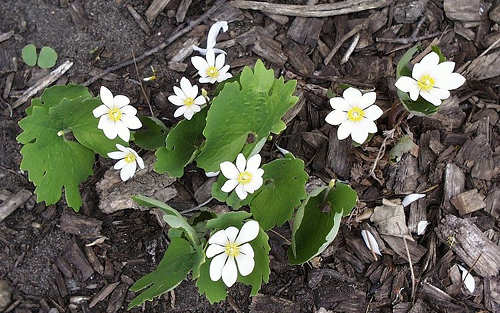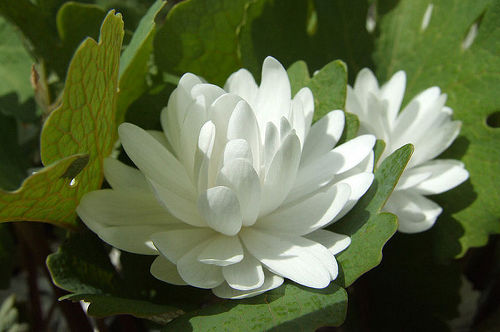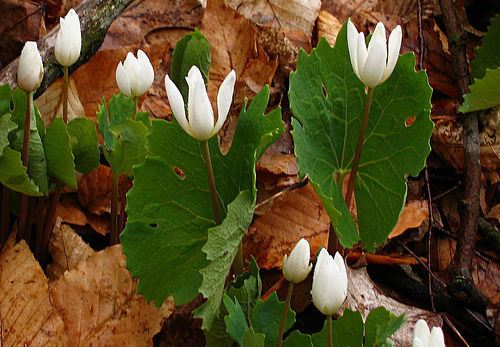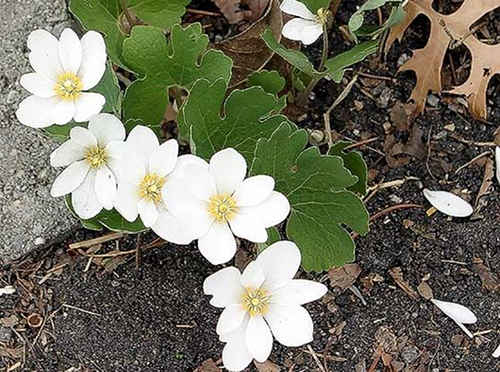
Names
Sanguinaria canadensis, Bloodroot, Coon Root, Snakebite, Sweet Slumber, Red Pucoon, Red Root, Tetterwort, Indian Paint
Description
Perennial with branched rhizomes, each one produces a flower, stem and a leaf. Flowers are white with 8-12 petals and yellow stamens.

Concern Level
High if they are found in grazing areas
Toxic Parts
Whole plant is toxic, but toxicity concentrated in the roots after leaves are open.

Symptoms
Occur within 45 minutes to 4 hours after ingestion and include gastrointestinal upset, lack of coordination, weakness, muscle tremors, seizures, coma, respiratory failure.
Danger
Contains sanguinarine, chelerythrine, protopine, and B. homochelidonine, alkaloids. Protopine is an opium alkaloid which affects the heart and respiratory system. These toxins kill animal cells on contact. Can be fatal.

More Information
*It should be noted that we are not veterinarians. This information is written specifically for horses and should be used for reference purposes only. If you think your horse has eaten something toxic call your vet right away.
